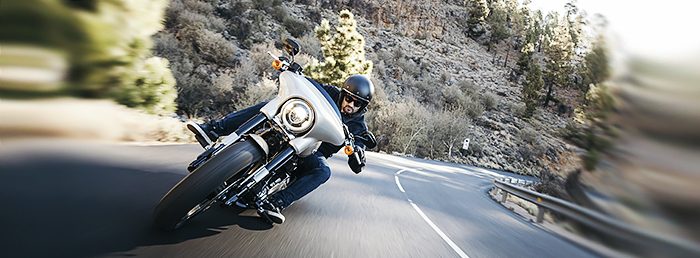
Choosing your motorcycle workshop is well worth it
Content
- Side stand, center pillar, lift, wheel block rail, lift table, motorcycle lift, or motorcycle deck
- Which system is for which use? We summarize to help you choose the perfect workshop stand
- What is a workshop crutch for?
- cheek
- Central crutch
- Lift up
- Workshop stand or lift table
- Rear workshop
- Front workshop bench
- stamina crutch
- Central workshop stand
- Rail with wheel block
- Wheel lock or front wheel support
- Candles
- Motor bridge
Side stand, center pillar, lift, wheel block rail, lift table, motorcycle lift, or motorcycle deck
Which system is for which use? We summarize to help you choose the perfect workshop stand
How to properly hold the motorcycle in order to mechanically intervene on it? As soon as you want to do mechanics on your motorcycle, the question of fixing and balance comes up. Indeed, both the side pillar and the B-pillar (when available) are never enough to do everything, especially when it comes to disassembling a wheel ... or two. And fortiori, we don't have a bridge at home. So how do you maintain a good level of safety and keep your motorcycle well in line with what you will be doing as a mechanical job? We've crafted solutions to help you complete your mechanical and repair work safely or even comfortably. So is it more of a side post, center post, lift, wheel block rail, lift table, motorcycle lift, or motorcycle deck?
What is a workshop crutch for?
- chain lubrication, tensioning and changing
- wheel disassembly
- work on the engine
- ...
There are several options available, depending on your space and budget, the type and weight of the bike, and above all what you will be doing on your bike. Its stability and maintenance is important.
cheek
Applications: engine mechanics, bodywork
It is found on almost all motorcycles and can be helpful when you want to think a little more about the mechanics. However, it takes a treasure of ingenuity to properly stabilize the bike and therefore use some accessories such as wedges, jacks and / or straps. Of course, the side is not perfect.
Fun fact: During the earthquake that triggered the 2011 tsunami in Japan, only motorcycles on the side stands did not end up in Honda's warehouses.
Central crutch
Applications: chain lubrication, chain set change, front and rear wheel removal, fork shell disassembly ...
The center strut can be ugly, heavy, and unwieldy (when it is still present on the bike, which is less and less body), but it offers great benefits when you want to work on your bike! Whether optional or standard, it allows the bike to be positioned correctly on the ground. This is not without its drawbacks: its relative sensitivity to longitudinal movements can cause it to descend faster than expected. It can be locked in place, in particular with an anti-theft device.
For wheel intervention, the motorcycle will be stabilized with a wedge or jack located under the engine, or in a strategic and easily accessible location.
Budget: from 120 euros
Lift up
Applications: Any engine intervention, part of the forward cycle. In particular, emptying the fork and replacing the Spi seal.
The lift is a chain that allows the motorcycle to be easily lifted from the grip point. The simplest option - a hand winch - clings to a beam or high element capable of withstanding a load of 100 to 200 or 300 kilograms (of course, there are lifts suitable for lifting several tons). There are also electric lifts, as well as pole-mounted lifts, which are then called workshop cranes. There are also swivel lift stems. It is used for both lifting the motorcycle and retrieving the engine.
It is very useful, however, the lift does not immobilize the motorcycle alone. The latter must be insured.
There are manual lifts and electric lifts, each model offering different lift heights, usually 2 to 3 m. However, a manual winch (we pull on a chain) is more than enough to intervene on a motorcycle. Then we'll see
Budget: from 35 euros for a manual lift, one hundred euros for an electric lift.
Workshop stand or lift table
Small lift, workshop stand is a "jacket" suitable for motorcycles. At least on a carefree motorcycle. It usually lies under the motorcycle, on the engine, often implying no exhaust line. Stability is not exemplary and the motorcycle should be well insured, especially with straps.
Fun fact: During the ZX6R 636 rebuilding we tested and did not approve this device for our motorcycle: it cost us a radiator and a little pride ...
Budget: from 100 euros
Rear workshop
Application: motorcycle stabilization, chain action, rear wheel action.
If you might need one crutch, this is this one. Attached to the rear wheel (diabolos or sleds), it allows the rear of the motorcycle to be easily lifted and literally placed on the ground. The wide workshop stand provides the necessary stability and fully guarantees its ability to stand firmly even when exposed to tight bolts.
Well known for pistols who use it both for putting on a heated blanket and for quickly changing wheels (or tires), the workshop stand has proven itself even better because it is very affordable. Count from € 35 for a simple and effective crutch, € 75 for an excellent one, and € 100 for the top of the top.
The rear workshop stand is available for both standard and single arms, in which case it attaches to the wheel axle.
Budget: from 45 euros
Front workshop bench
Application: actions on the front wheel, brake calipers and pads, as well as some elements of a part of the cycle, such as a fork, rear shock absorber, etc.
In particular, this crutch is mainly used for actions performed on the wheel and on the nose gear. Again, it works brilliantly on circular benches where it lets you pass through a heated blanket or quickly and easily access anything braking.
The front workshop stand can be easily used to replace wheel bearings or clean the fork. However, be careful to properly insure the motorcycle, which is why it is used in conjunction with spark plugs or a workshop rear stand.
The workshop front post is usually located under the steering column, in the cavity of its axis. As a result, it cannot be used to replace steering column bearings. Logics.
Budget: from 60 euros
stamina crutch
Application: actions on front and rear wheels, brake calipers and pads, as well as some elements of a part of the cycle, such as a fork, rear shock absorber, etc.
From our point of view, a little surprise that allows the bike to be fully suspended by removing the front wheel and rear wheel from the ground. We can then optimally intervene with the desired elements without risking it. Better yet, wheeled models allow you to ride your motorcycle even without wheels. Be careful to ensure this.
The wear stand is attached to the frame, usually with two studs in the engine axles. Attention, adapters are specific to certain motorcycles and are sold separately. Choose a complete kit, but offer the option of replacing the outlets.
Budget: from 140 euros full
Central workshop stand
Application: actions on front and rear wheels, brake calipers and pads, as well as some elements of a part of the cycle, such as a fork, rear shock absorber, etc.
Less mobile than an endurance stand, this model performs the same function, but mounts on either side of the frame. It is the perfect combination of a workshop crutch and an endurance stance.
Budget: from 100 euros
Rail with wheel block
Application: anything that does not affect the front transmission ...
This type of equipment offers the ability to keep the motorcycle straight and secure. The wheel unit can also be used autonomously, without a rail, but the stability is less. This device can also be used to transport a motorcycle when attached to a trailer or general vehicle.
Budget: from 120 euros
Wheel lock or front wheel support
Application: simple mechanics, excluding interference on the front wheel
This tool is a must for DIYers as it perfectly protects the bike by tightening the front or rear wheel. However, it does not allow simultaneous operations on the bow and rear axles if the wheels are to be disassembled.
Useful for mechanics, also useful for transportation. On the other hand, it is forgotten to park as it requires you to take a direct direction and therefore unlock. If the rear wheel is loose. It depends on you.
Budget: from 75 euros
Candles
Application: additional stability with a crutch or lift. Place a wheel or other action on the engine.
We see 36 ... models, but they are valuable allies when stabilization is needed. Placed under the footrests or tighten them, they act like wedges, allowing support on the front or rear wheel.
Solos are not very useful because of their height (sometimes adjustable, but less slender than a jack), with the exception of straightening the motorcycle, you can choose models that perform less well than the strongest of them or specific bikes. They are useful mainly in pairs and are capable of withstanding heavy loads.
All that remains is to find a good anchorage point and make sure the bike stays in place. Conclusion? Candles are a very specialized "tool" that can be advantageously replaced by other equipment that we present to you that is more practical and easier to use. If your budget doesn't fit, then there are models from € 30 per pair.
Motor bridge
Application: Any type of motorcycle mechanics, but additional supports
The ideal solution for working on a motorcycle, the hydraulic lift is a highlight of any workshop. Ideal for maintenance operations and for working at human height, it requires a little extra machinery and equipment for anything that will act on the column bearings and fork or on the rear shock.
Of course, the motorcycle deck is for mechanics who have garage space, and this is a significant cost, even if there are currently models that start at around € 400 excluding the motorcycle immobilization system and less than € 600 for the hydraulic axle with fastening system , rail and equipment.
If you often have to act on the engine, exhaust, or just if you can, do not hesitate to invest ...
Budget: from 400 euros
